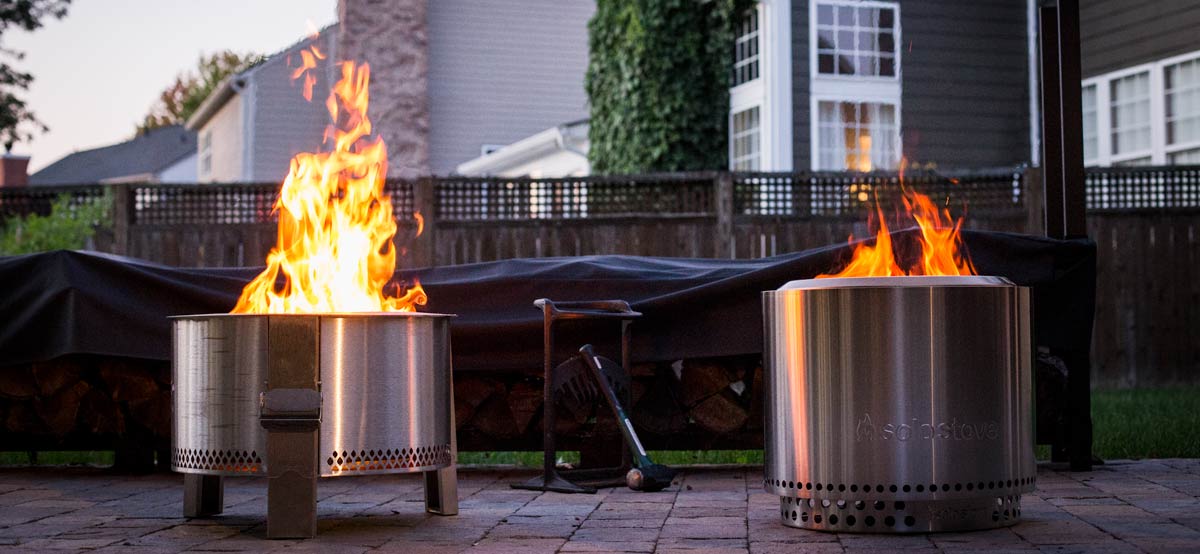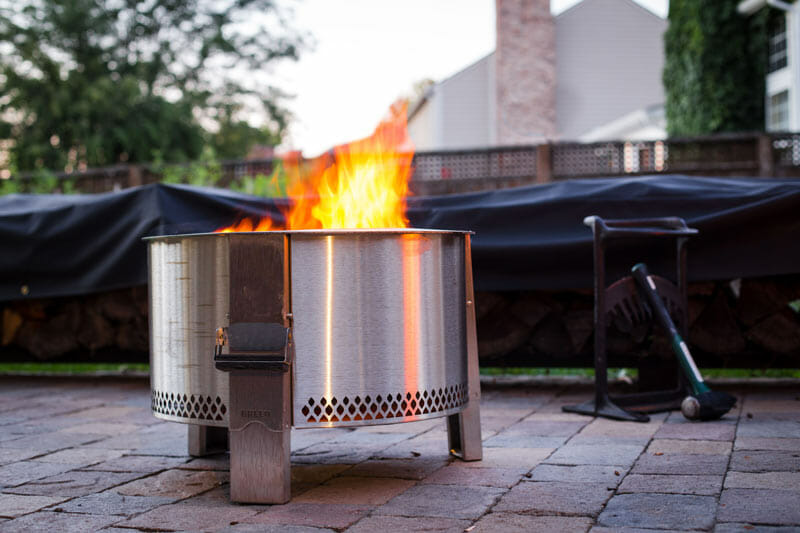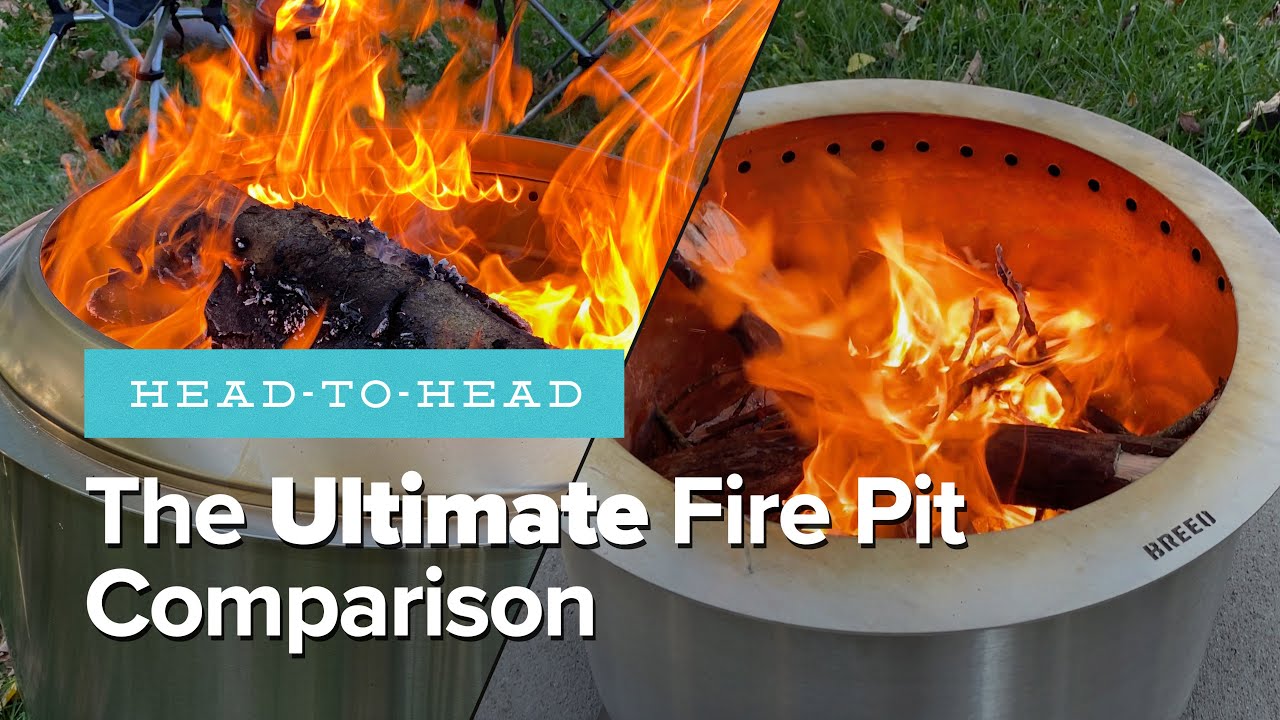Interested in finding the perfect smokeless fire pit for your outdoor gatherings? Look no further than the comparison between the Breeo Y-Series and the Solo Stove Bonfire 2.0. This informative video by The Barbecue Lab covers everything from how these fire pits are built to where they are manufactured, as well as exploring their portability, smokelessness, height adjustability, and safety concerns.
Both the Breeo Y-Series and Solo Stove Bonfire 2.0 are made with 304 stainless steel, with an internal diameter of 17.5 inches. While the Breeo Y-Series is height adjustable at 11, 15, and 20 inches, the Solo Stove Bonfire 2.0 stands at 14 inches. With similar claims of producing a smokeless fire, these fire pits offer unique features that set them apart. So, if you’re looking to elevate your outdoor cooking experience, this comparison video is a must-watch!

Built and Design
When considering the construction of fire pits, the materials used play a crucial role in determining the durability and overall quality of the product. Both the Breeo Y-Series and Solo Stove Bonfire 2.0 are constructed using 304 stainless steel, which is known for its corrosion resistance and strength. The thickness of the metal is not explicitly mentioned, but given that both units are double-walled, it indicates a sturdy build.
The internal diameter of both fire pits is identical, measuring at 17.5 inches. This size allows for ample space to accommodate standard-sized firewood while ensuring that the flames are contained within the fire pit. It’s worth noting that the external diameter differs slightly, with the Breeo Y-Series coming in at 21 inches and the Solo Stove Bonfire 2.0 at 19.5 inches. This variation may affect the overall footprint of the fire pit based on the available space for setup.
One significant difference between the two models lies in height adjustability. The Breeo Y-Series offers three height settings, allowing users to adjust the pit to 11, 15, or 20 inches based on preference and use. In contrast, the Solo Stove Bonfire 2.0 does not offer height adjustability and comes at a fixed height of 14 inches. The Breeo’s height settings cater to various scenarios, from moving the fire pit at the 11-inch stow setting to cooking comfortably at the 20-inch cook setting. This versatility may appeal to users with specific needs.
In terms of weight, the Breeo Y-Series weighs 31 pounds, while the Solo Stove Bonfire 2.0 weighs in at 23 pounds. The weight differential may impact portability, with the lighter Bonfire 2.0 being easier to transport for outdoor gatherings or camping trips. However, the sturdier build of the Breeo Y-Series may provide added stability during use, especially in windy conditions.
The overall design of both fire pits focuses on a combination of functionality and aesthetics. With sleek stainless steel finishes and thoughtful features like handles for easy carrying, these fire pits aim to provide an enjoyable outdoor experience while adding a touch of style to your space.
Smokeless Functionality
Both the Breeo Y-Series and Solo Stove Bonfire 2.0 boast claimed smokeless technology, promising a cleaner and more enjoyable fire experience. The mechanism behind achieving a smokeless fire involves a clever design that routes airflow to combust smoke and particulates efficiently.
The airflow system in both fire pits allows for oxygen to be introduced at the bottom of the pit through strategically placed holes. This air circulation creates a secondary combustion stage, where smoke particles are burned off before exiting through the top of the fire pit. The result is a significant reduction in smoke emission compared to traditional fire pits.
During user testing and reviews, many have attested to the effectiveness of the smokeless technology in both models. While it’s essential to remember that achieving a completely smoke-free fire with wood fuel is challenging, the Breeo Y-Series and Solo Stove Bonfire 2.0 come close to this ideal, providing an enhanced outdoor fire experience.
Manufacturing
The origin of manufacture can influence factors such as quality control, production standards, and ethical practices. In the case of the Breeo Y-Series, the fire pit is proudly manufactured in-house in the United States. This domestic production allows for greater oversight and adherence to specific manufacturing guidelines.
Conversely, the Solo Stove Bonfire 2.0 is manufactured overseas in China, which may raise questions regarding production standards and labor practices. While location does not inherently dictate product quality, some users may prefer products made domestically for reasons like supporting local businesses and ensuring transparency in manufacturing processes.
Fuel Type
The type of fuel a fire pit can utilize impacts its versatility and convenience for users. The Solo Stove Bonfire 2.0 is primarily designed for use with wood as the recommended fuel source. This focus on wood burning ensures a traditional and authentic fire experience while simplifying fuel selection for users.
On the other hand, the Breeo Y-Series offers more flexibility by supporting multiple fuel types. In addition to wood, users can opt for wood pellets or charcoal as fuel for the fire pit. This versatility allows for experimentation and customization based on user preferences and availability of fuel sources.
When comparing fuel efficiency between the two models, it’s essential to consider factors like burn time, heat output, and cost-effectiveness. While both fire pits excel in providing efficient combustion for a satisfying fire, the option to choose from different fuel types may give the Breeo Y-Series an edge in certain scenarios.
Ease of fueling is another crucial aspect to consider when evaluating fire pits. Both the Breeo Y-Series and Solo Stove Bonfire 2.0 offer user-friendly designs that facilitate adding fuel and maintaining the fire. Whether it’s loading wood pieces or arranging charcoal, the process should be straightforward and convenient for a hassle-free fire experience.

Safety Concerns
Ensuring the safety of users and the surrounding environment is paramount when using fire pits. Common concerns include the risk of burning grass and potential safety issues when placing the fire pit on wooden decks.
With the Breeo Y-Series and Solo Stove Bonfire 2.0, there are precautions recommended by the manufacturers to mitigate these risks. For instance, the optional stand for the Bonfire 2.0 prevents direct contact between the fire pit and surfaces like grass or decks, reducing the likelihood of damage or accidents.
Using fire pits on wood decks should involve protective measures such as heat-resistant mats, platforms, or stands to create a safe buffer between the fire and the deck surface. Additionally, monitoring the fire pit during use and following guidelines for distance from flammable materials can further enhance safety precautions.
Both Breeo and Solo Stove provide guidance on safe practices and measures to prevent accidents or damage while enjoying a pleasant outdoor fire. Following these recommendations can help users enjoy their fire pit responsibly and minimize potential risks.
Warranty
The warranty offered by manufacturers reflects their confidence in the product’s quality and durability. In the case of the Breeo Y-Series, a lifetime warranty is provided to customers, ensuring long-term protection and support for the fire pit.
Similarly, the Solo Stove Bonfire 2.0 also comes with a lifetime warranty, underscoring the brand’s commitment to standing behind their product and providing reliable after-sales service. This warranty coverage can offer peace of mind to users, knowing that they are supported in case of any unforeseen issues or defects.
Both Breeo and Solo Stove have received positive feedback from customers regarding their warranty policies, with instances of responsive and helpful customer service when addressing warranty-related inquiries. This level of support contributes to a positive user experience and builds trust in the brand’s reliability.

Comparison of User Experience
User reviews and feedback provide valuable insights into the practical aspects of owning and using the Breeo Y-Series and Solo Stove Bonfire 2.0. By examining the pros and cons highlighted by users, we can gain a comprehensive understanding of the overall satisfaction levels with each product.
According to user reviews, common pros for both fire pits include their smokeless functionality, sturdy construction, and ease of use. The ability to enjoy a clean and efficient fire, along with the portability and design features, has been well-received by users of both models.
On the flip side, some cons reported by users may include minor issues like difficulty in cleaning certain parts of the fire pit, issues with accessories or additional components, or personal preferences regarding height adjustability or fuel type selection. These factors, while subjective, can influence individual user experiences and preferences.
Overall satisfaction levels with the Breeo Y-Series and Solo Stove Bonfire 2.0 appear to be positive, with users appreciating the reliability, performance, and aesthetics of the fire pits. The robust construction, smokeless technology, and warranty offerings contribute to a favorable user experience, making these fire pits popular choices among outdoor enthusiasts.
Price and Value
When considering the initial cost comparison between the Breeo Y-Series and Solo Stove Bonfire 2.0, users may find differences based on features, build quality, and brand reputation. While the exact pricing may vary based on promotions, discounts, or seasonal offers, understanding the value proposition of each fire pit is essential.
Long-term value considerations involve assessing the durability, performance, and overall satisfaction derived from the fire pit over extended periods of use. Factors like warranty coverage, maintenance requirements, and user experience can influence the perceived value of the product over time.
While the initial cost may be a crucial factor for some users, the long-term value derived from owning a quality fire pit that meets personal preferences and usage needs can outweigh the price differential. By weighing the benefits, features, and durability of the Breeo Y-Series and Solo Stove Bonfire 2.0, users can make an informed decision based on their budget and requirements.

Additional Offers
For users interested in purchasing the Solo Stove fire pits, available discount codes can provide cost savings and incentives for acquiring the product. By utilizing discount codes like those offered by The Barbecue Lab, users can enjoy reduced prices on their Solo Stove purchases, making the fire pits more accessible and affordable.
Affiliate links included in videos or promotional materials can also offer users the opportunity to support content creators while making a purchase. By clicking on affiliate links in The Barbecue Lab video description, users can contribute to supporting the channel while acquiring quality outdoor cooking products like Solo Stove fire pits.
These additional offers cater to users looking for incentives, discounts, or promotional deals when purchasing fire pits or related outdoor cooking appliances. By taking advantage of these offers, users can maximize their value and savings while enjoying top-notch products from reputable brands like Solo Stove.
Conclusion
In conclusion, the comparison between the Breeo Y-Series and Solo Stove Bonfire 2.0 reveals several key differences and similarities that can guide users in selecting the best smokeless fire pit for their needs. Each fire pit offers unique features, construction quality, and functionality that cater to specific preferences and use cases.
Based on the outlined comparison points, users can weigh factors like construction materials, smokeless technology, height adjustability, fuel type versatility, safety considerations, warranty coverage, user experience feedback, pricing, and additional offers when making their choice.
Ultimately, the decision between the Breeo Y-Series and Solo Stove Bonfire 2.0 depends on individual priorities, preferences, and budget constraints. By considering all aspects of the comparison and evaluating which features align with personal requirements, users can make an informed decision that enhances their outdoor fire experience and enjoyment.
